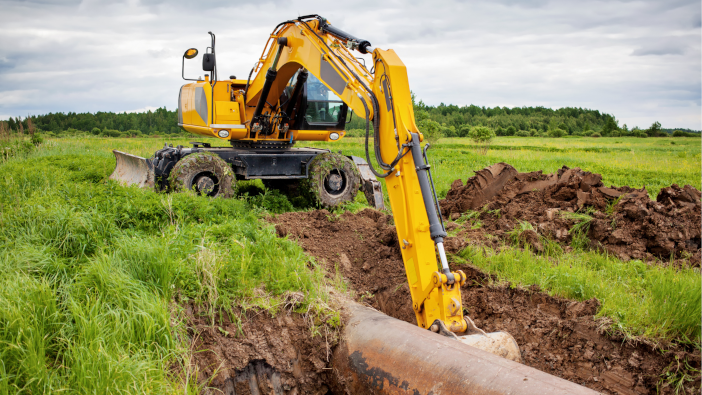Linewatch, a leading pipeline safety and awareness group, has released its 2021 Infringement Report in which it reports that incidents where workers were digging too close to high-pressure oil, gas and chemical pipelines on farmland increased by 7% compared to the previous year.
42% of all incidents occurred on farmland, although Linewatch suggests that this increase is the result of improved reporting, rather than an actual increase in incidents.
Murray Peat, manager at Linewatch, explained: “It’s encouraging to see data entries from new members in 2021, and from some who have been reluctant to report their incidents in the past. Although it means the overall number of infringements has increased, we know that this wider and more transparent reporting is a good thing for the long-term safety of those involved in digging works.
“It’s thanks to more of our members promptly reporting any infringement or ‘near-miss’ that we can identify trends and problem areas – the dangerous activities, companies posing the biggest threats and even the geographical ‘hotspots’. Armed with such insights we can then raise awareness, better educate those at risk, and prevent incidents, rather than simply react to them.
“Agricultural land accounts for more than 70% of the UK, with 75% of all pipelines running beneath it. This puts farmers’ risk of striking a pipeline higher than those working in any other industry. It’s so important that the correct procedures are followed to prevent serious injury. Whilst broader reporting is welcomed, it only reinforces the trend of farmland posing the biggest threat to pipeline safety.”
An infringement can be someone simply working near a pipeline without the owner’s awareness or permission, through to a worker actually striking a pipe.
The report suggests that 30% of infringements occurred despite the operator being aware of the pipeline. Linewatch states that this is troubling because it highlights a casualness in some quarters about the actual danger.
Mr Peat is concerned by this: “Pipelines can be buried as little as three feet below the surface, which is about the length of a cricket bat. If struck, they can cause serious injuries and fatalities, as well as irreversible environmental damage with commensurate fines. The potential risk cannot be overestimated. This is why the proper process of searching with LSBUD before digging and of course, alerting the pipeline operator, should be followed every time.”
Landowners and their contractors pose the greatest risk according to the report. Landowners were responsible for 167 infringements, 53% of all reported incidents.
Fencings was the most common danger activity (25%), followed by excavation for service; work undertaken to install new services such as telecoms, gas and water supply.
Of all incidents, 11 were deemed as high risk, with six occurring on farmland. This refers to work that had the potential to cause serious damage. This was an increase from the previous year, but with more data gathered this is not surprising. Medium and low-risk incidents also increased on farmland in 2021.
The first and fourth quarters reported peak activity, which correlates with increased season work such as ditching and fencing, as well as the end of the tax year, where organisations use up their remaining budgets.
Mr Peat concluded: “With a significant increase in digging taking place post-pandemic, and no signs of this slowing down as the Government seeks to kick start the UK economy through significant investment in large scale infrastructure, it is more important than ever that the correct digging procedures are followed.”


